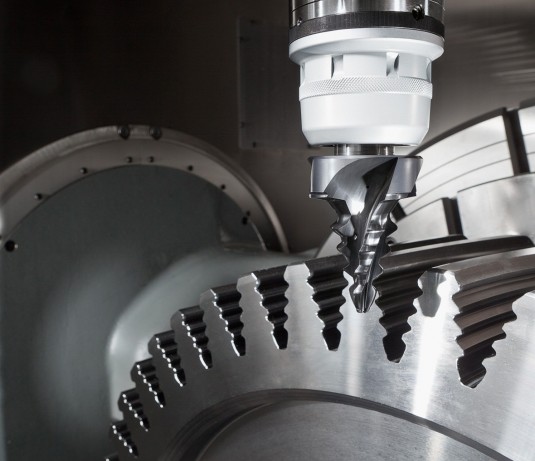A three-way research partnership between software vendor Delcam, engineering services firm Iruba, and tool maker Hermle led to the new method.
A new computer-aided milling (CAM) method is proving able to replace a traditional method in use since the late 19th Century for the creation of turbo machinery components. New Fir Tree profiles are possible in five-axis machining due to a joint effort by CAD/CAM software developer Delcam, engineering support firm Iruba, and machine tool manufacturer Hermle.

The new way to create the profiles is being accomplished using Delcam PowerMill and a five-axis strategy called trochoidal machining; the method has just been patented by Iruba. It allows complex Fir Tree profiles to be produced on milling machines, such as the Hermle C60 five-axis machining center, rather than having to use specialist broaching equipment.
Delcam says the new method provides high material removal rates with lower, and more consistent, cutting forces. The more consistent cutting forces also ensure higher accuracy in the position and in the shape of the slots, with minimal thermal effects on the surface of the profiles. The process also reduces the number of specialist cutting tools required, and cuts the machining time in steel alloys by between 30%-40%, compared to alternative standard milling solutions, giving a time almost equal to broaching.
A first demonstration of the process took place at the IMTS trade show in 2012, and is now available in PowerMill. The three companies milled small fir-tree geometries in IN718, a typical material for aeronautic engine parts. “The presentation impressed our visitors and made it very clear that milling is the more effective technology, since we could mill even curved slots, deburr them and measure them in one process on Hermle’s smallest five-axis machine, the C22,” says Mattias Rutschinski, managing director at Iruba. “Broaching is a technology developed at the end of the 19th century,” adds Rutschinski. “Many applications can be completed today with much lower power consumption and oil waste, by much more integrated and flexible solutions, fitting the production demands of the 21st Century.”
Our take
All too often “not invented here” is an excuse for companies depending solely on internal resources and falling behind the competition as a result. But Delcam, Iruba, and Hermle have certainly proven in this case that three heads are better than one. There is no talk of acquisitions here. Instead they have created a symbiotic relationship that benefits their mutual customers.





